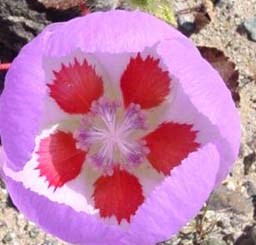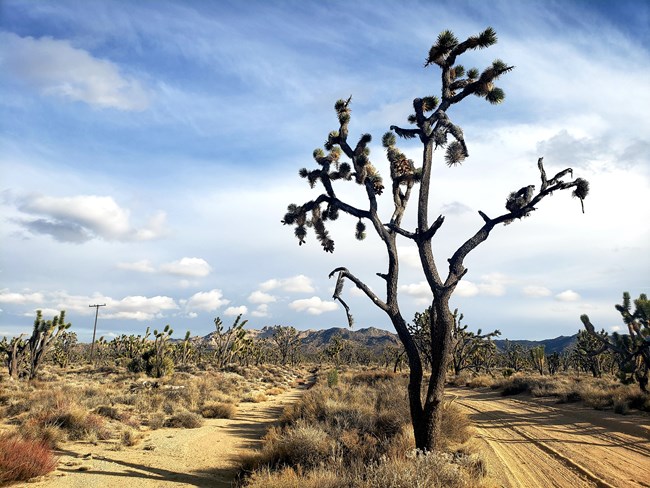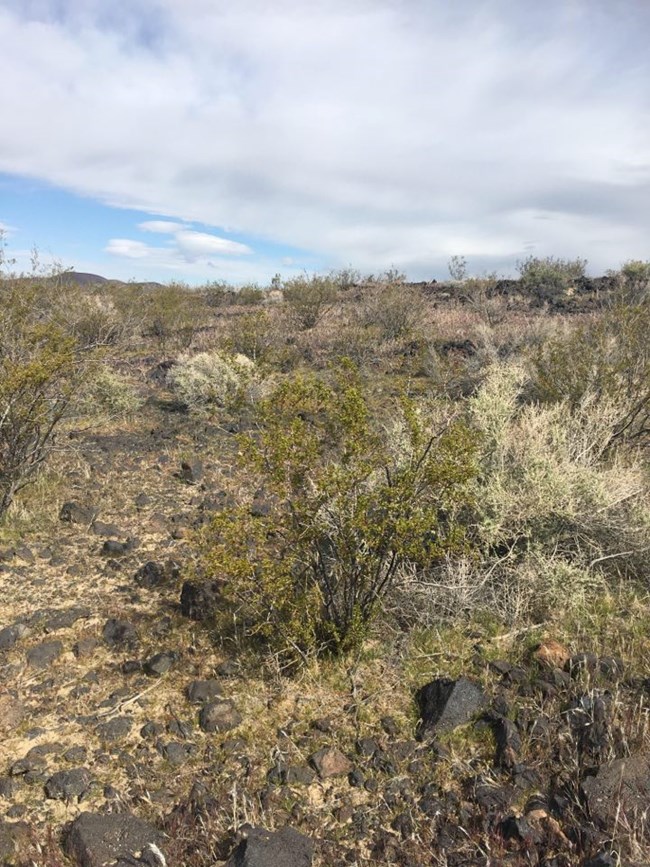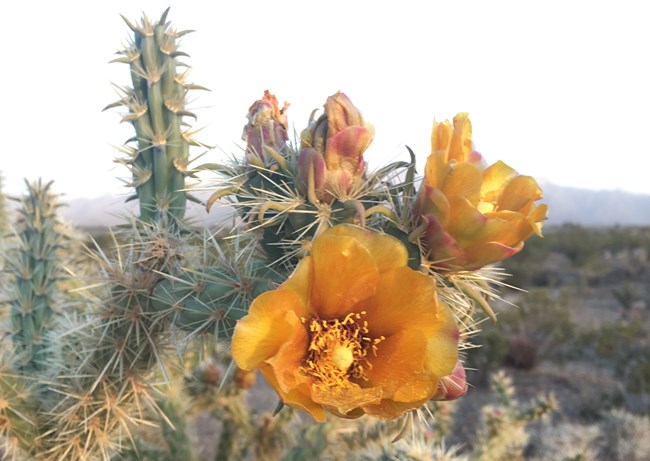
E.Green Known as the high desert, Mojave National Preserve has elevations from 938 feet at Zzyzx to 7,929 feet at Clark Mountain. The range in elevation diversifies plant life. Relict stands of white fir, juniper and pinyon pines are found at higher elevations while yuccas, Joshua Trees, and cholla are found lower. Most annual plants escape the drought periods by completing their life cycles quickly during the short winter and spring rainy season, before the desert becomes dry and inhospitable. These are the grasses and wildflowers that carpet the desert with soft color in favorable years. Drought resistant species include shrubs, which often drop their leaves during dry periods, and cacti, whose leaves are reduced to a spine. The fleshy stem of the cactus stores water, while the spiny leaves provide shade to protect the stem sections. A third group of plants grows around springs and seeps where there is an ample supply of water. This riparian vegetation is an important resource to animals, especially migratory birds.

A. Gilliland, NPS 
B. Michel, NPS 
B. Michel, NPS The requested video is no longer available.
|
Last updated: August 3, 2023
